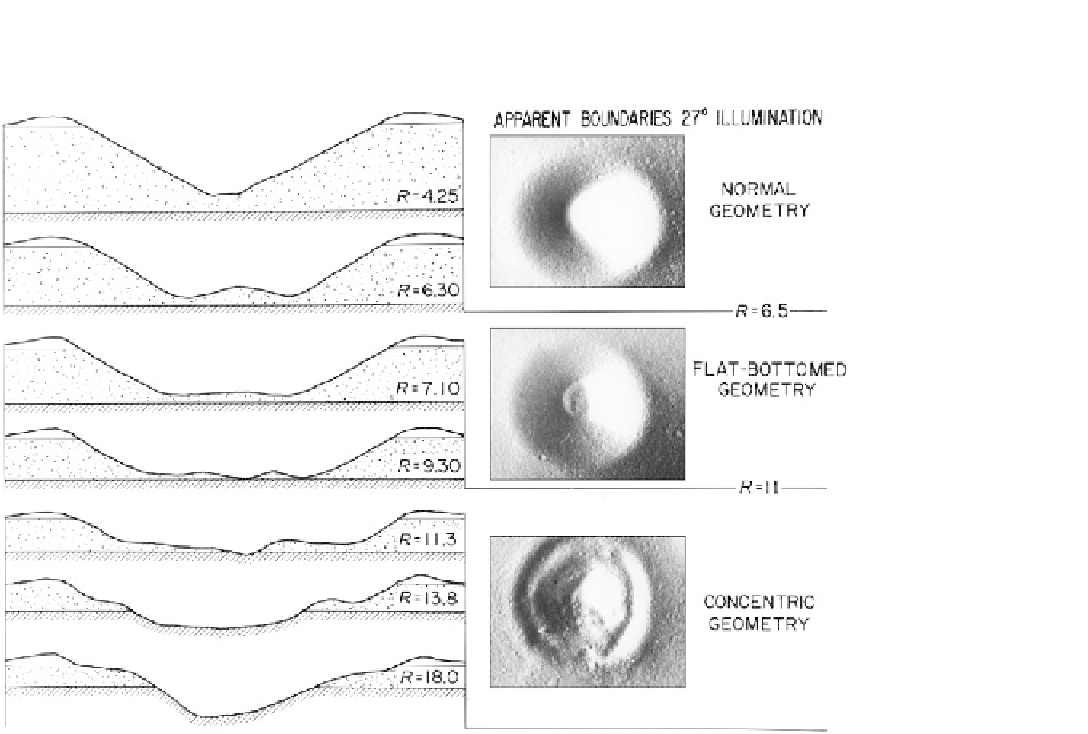Geology Reference
In-Depth Information
Figure 4.47. Diagrams
showing crater
morphology as a
function of simulated
regolith (stippled
pattern) thickness
overlying bedrock.
Normal craters form
when impacts fail to
penetrate the thick
debris layer;
at-
bottomed craters form
when impact impinges
bedrock but does not
penetrate; concentric
craters form as impact
penetrates through
regolith and excavates
bedrock. The cross-
sections and crater
images are from
experiments. R is the
crater diameter/layer
thickness. The
photographs are
representative
morphologies with
boundary R values
(from Oberbeck and
Quaide,
1967
).
A generalized geologic time scale for the Moon has
been developed. It is based on mapping that began with
Earth-based telescopic observations (
Fig. 2.7
), integration
of spacecraft data, and incorporation of information from
samples, including ages for key geologic rock units
(
Fig. 2.10
). As codified by Don Wilhelms in his classic
reference The Geologic History of the Moon, lunar history
is divided into
five periods (
Fig. 4.50
). The pre-Nectarian
Period is represented by the ancient heavily cratered high-
lands. No speci
c formal geologic formations have been
mapped for this interval of time. As Wilhelms noted,
operational constraints precluded Apollo and Luna land-
ings in pre-Nectarian sites, and untangling this episode of
lunar history remains a challenge, but new insight is
currently being gained from the recent lunar missions.
The Nectarian Period is marked by the formation of the
Nectaris impact basin and the emplacement of its ejecta
blanket, the Janssen Formation. The Nectaris basin is
about 860 km in diameter and probably resembled the
Orientale basin (
Fig. 4.25
) shortly after its formation.
Samples of Nectarian-age materials are thought to be
Figure 4.48. Evolution of the lunar crust through time, beginning
with the formation of the magma ocean, through the
development of the anorthositic crust and the eruption of
basaltic lava
flows (with permission from Springer Science
+Business Media: Stratigraphy and isotope ages of lunar
geologic units: chronological standard for the inner Solar
System, Space Science Reviews, 96,
2001
,9
-
54, Stof
er, D. and
Ryder, G.).



